Did you know that there are over 100 species of snappers? If you were asked to name the different types of snapper (except the red snapper, of course), how many would you get?
This article lists all the popular snapper species that anglers usually target. So, buckle up and take a trip to learn about this perciform fish under the Lutjanidae family and the various places to catch them!
Here’s a summary of the world’s most popular snappers:
Red Snapper
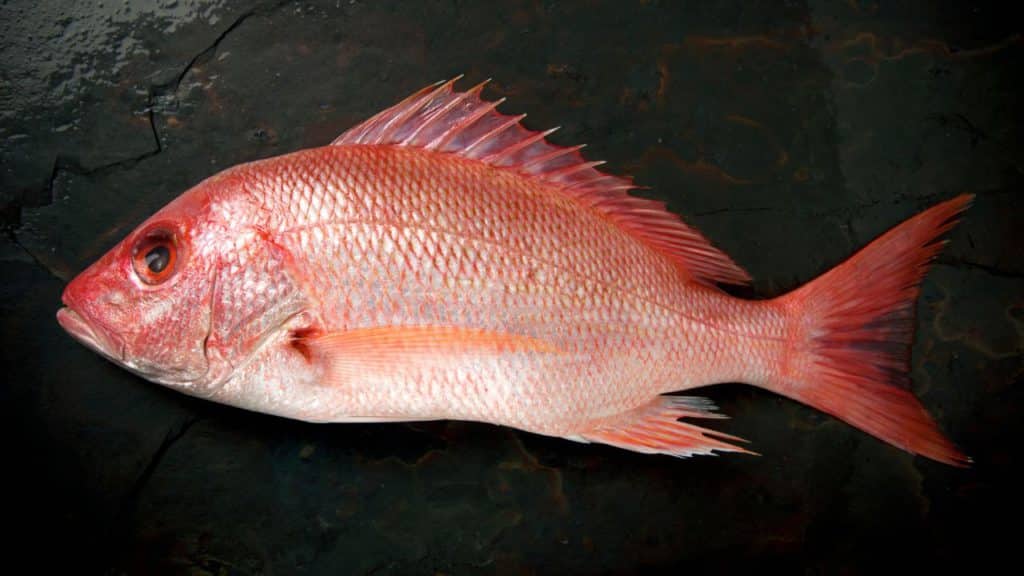
Scientific Name: Lutjanus campechanus
Other Names: Rock cod, Pacific red snapper
Appearance: Deep rosy red with a dark fringe around dorsal and tail fins
Average Weight and Length: 32 to 64 oz., 24 to 39 inches
Range: Gulf of Mexico, North America, Central America
You can identify this snapper easily due to its lovely deep rosy red color. Red snappers also have a dark fringe around the dorsal and tail fins.
Adult red snappers weigh between 32 to 64 ounces. Do you want to catch red snappers? You can find them in Florida waters, around 450 meters in depth.
Fun Fact: Adult red snappers’ diet consists of shrimp and other crustaceans.
Yellowtail Snapper
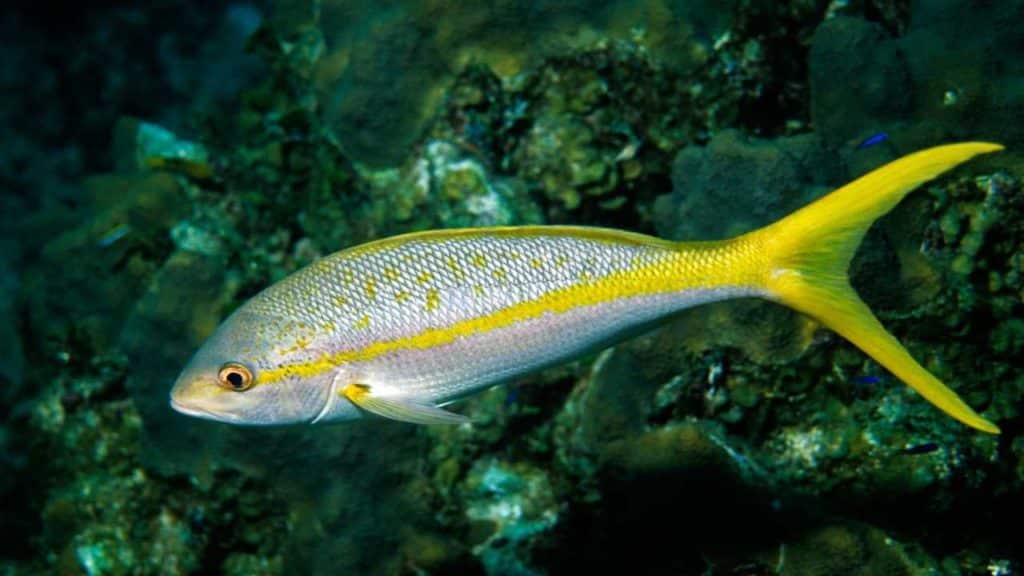
Scientific Name: Ocyurus chrysurus
Other Names: Yellowfin snapper
Appearance: Olive to bluish back, yellow spots on upper sides, narrow pink and yellow stripes on the belly and lower sides.
Average Weight and Length: 141 oz., 11 to 15 inches
Range: Massachusetts, Brazil, Bermuda, Caribbean, Gulf of Mexico
Yellowtail snappers love tropical waters. They are hard to miss thanks to the broad, yellow stripe running from the nose to the tail.
You’ll also notice yellow spots on the upper sides and narrow pink, yellow stripes which alternate around the lower sides. Unlike other snappers, the yellowtail snapper lacks a dark lateral spot.
Try the western Atlantic Ocean from Massachusetts to Bermuda to catch these snappers.
Cubera Snapper
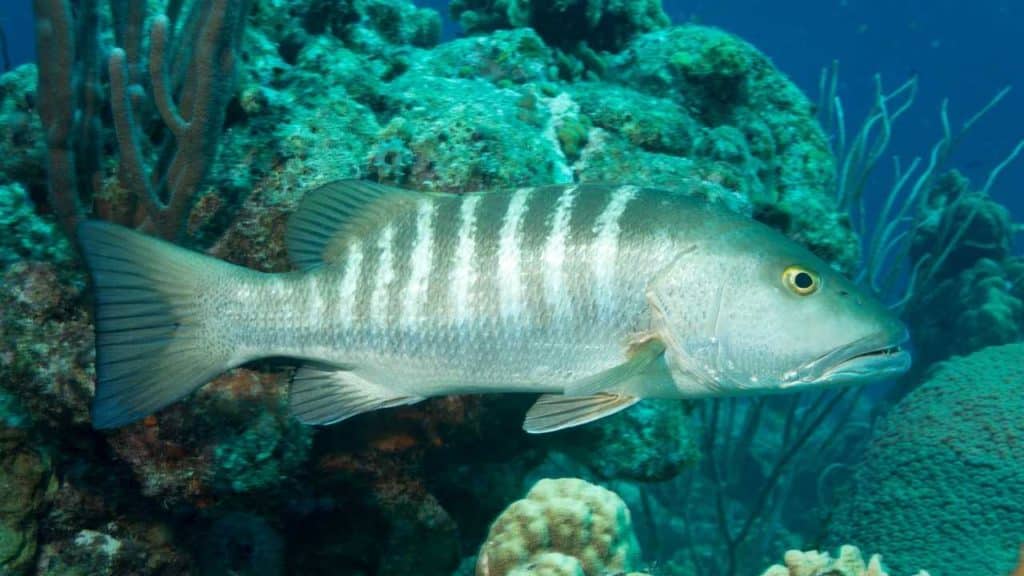
Scientific Name: Lutjanus cyanopterus
Other Names: Cuban snapper, Canteen snapper
Appearance: Gray or dark brown body with a tinge of red. Anal and ventral fins have a bluish tinge.
Average Weight and Length: 640 oz., 36 inches
Range: West Atlantic Ocean from Massachusetts to Brazil
Cubera snappers love staying alone, especially in reefs. They are a popular game fish with an easily identifiable dentition. Moreover, this snapper species has large lips and canines big enough to see with their mouths closed.
You can identify the cubera snapper through its dark brown or greyish body with a tinge of red. In addition, the anal and ventral fins are bluish. Although common cubera snappers weigh 640 ounces at 36 inches, some go up to 2000 ounces and 60 inches.
Unfortunately, this species is rare in the Gulf of Mexico, but there are reported sightings in the western Atlantic Ocean.
Lane Snapper
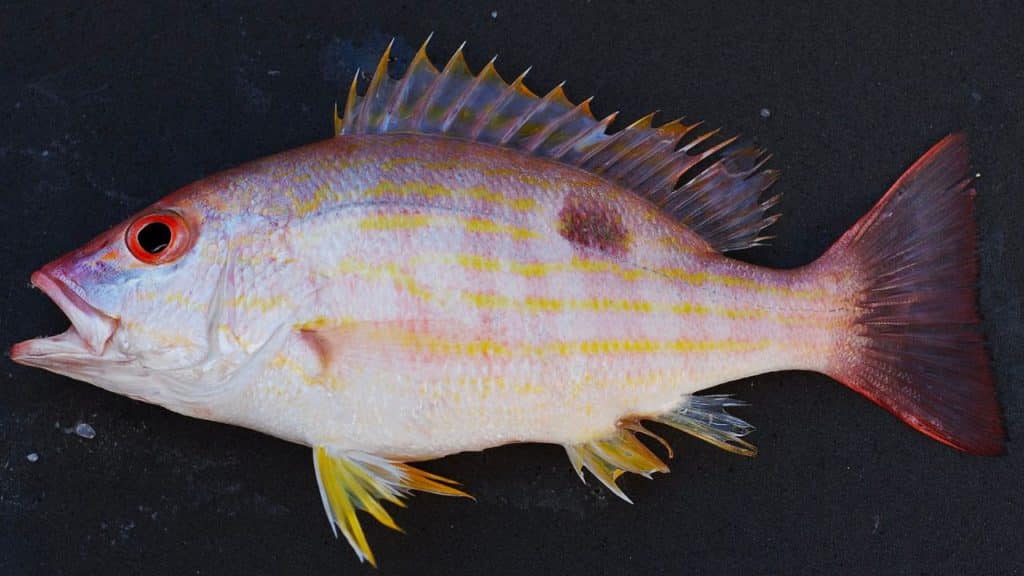
Scientific Name: Lutjanus synagris
Other Names: Mexican snapper, Redtail snapper, Spot snapper, Candy snapper
Appearance: Back is pinkish-red, silvery belly, 8 to 10 silvery stripes on the side, dark spot on the side.
Average Weight and Length: 16 to 128 oz., 20 to 25 inches
Range: North Carolina, Brazil, South America, Bermuda, Gulf of Mexico
You might know the lane snapper as a spot snapper. When you look at it, the first thing to notice is the dark spot and silvery stripes on the side. Moreover, its back is pinkish-red, but its belly is silverish.
When looking for lane snappers, check coral reefs and vegetated sandy areas. They are 25 inches long and weigh a maximum of 128 ounces.
Blackfin Snapper
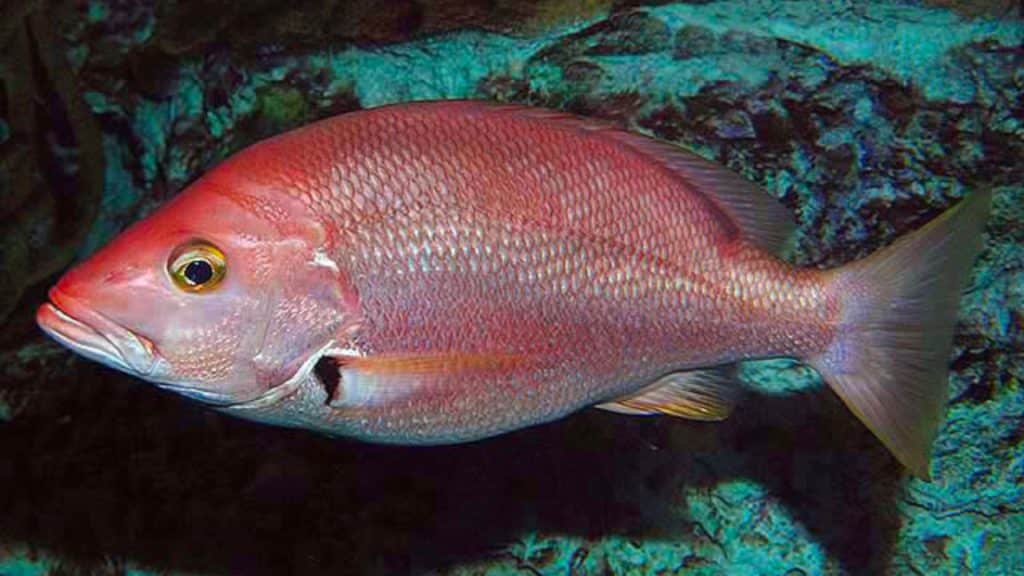
Scientific Name: Lutjanus buccanella
Other Names: Blackspot snapper, gun-mouth backfin
Appearance: Generally red with silvery-red belly and yellowish pelvic, anal, and caudal fins
Average Weight and Length: 493 to 624 oz., 20 to 30 inches
Range: Tropical Western Atlantic, Bermuda, Trinidad, North Brazil, Gulf of Mexico
The blackfin snapper’s deep-red color stands out from its silvery-red sides and bottom. It also has a black crescent-shaped botch at the pectoral fin’s base.
Fun Fact: The color of a blackfin snapper’s eyes is a beautiful yellow-orange color.
The average maximum blackfin weight is 493 ounces. However, some records show that some go up to 624 ounces. Since this snapper is an opportunistic feeder, you’re more likely to find it at the bottom of the ocean.
Vermilion Snapper
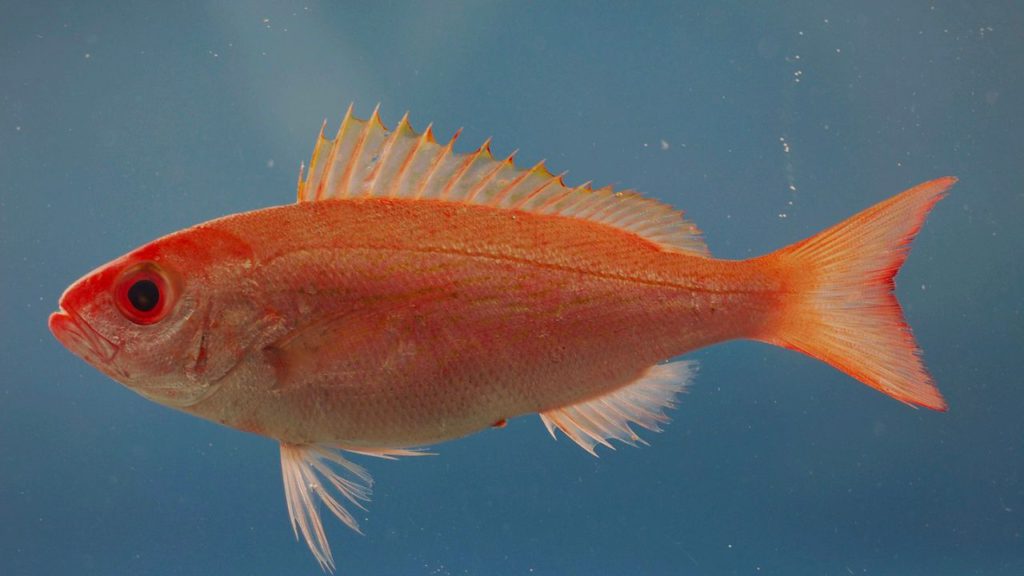
Scientific Name: Rhomboplites aurorubens
Other Names: Mingo, beeliner
Appearance: Pale to silvery-white bottom and orange-red top, narrow diagonal, and horizontal yellow-gold streaks.
Average Weight and Length: 96 to 114 oz., 14 to 24 inches
Range: Cape Hatteras, North Carolina, Bermuda, Gulf of Mexico, Brazil, West Indies
Unlike other snapper species, a vermilion snapper features a beautiful rosy-red back. Furthermore, the belly is much lighter and has irregular lines running on its side.
The vermilion snapper, also known as Mingo, looks like the red snapper. However, their size, belly, and sides are distinctly different.
Irregular reef-like bottoms are the perfect home for vermilion snappers. As such, they love the tropical Western Atlantic waters.
Mutton Snapper
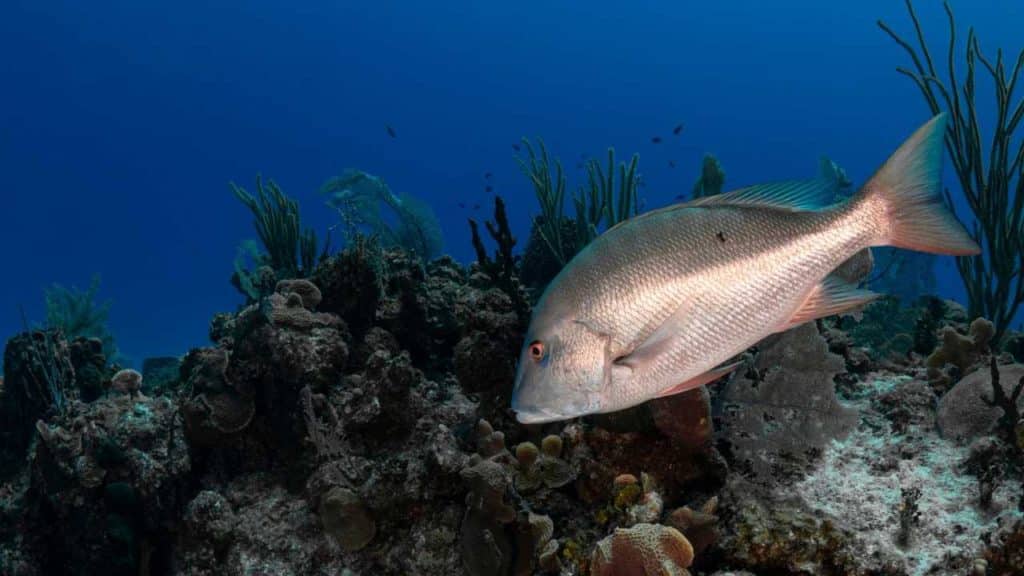
Scientific Name: Lutjanus analis
Other Names: Mutton fish, king snapper, virgin snapper
Appearance: Olive-green backs and tops with a red tinge on the belly, black spot on upper back, blue stripes on cheek.
Average Weight and Length: 150 to 240 oz., 20 to 35 inches
Range: Massachusetts, Brazil, Gulf of Mexico, Florida, Bahamas, Caribbean Sea
Mutton snappers love rocky reefs and are very colorful.
One unique feature of this type of snapper is the two-color phases. This snapper is a barred color while resting and switch to a plain color when swimming.
It’s common to confuse mutton snappers with lane snappers, but all of the mutton snapper’s fins are red. Besides, this snapper has a unique black spot on its upper back and blue stripes right below the eyes.
You’ll find these snappers in the western Atlantic Ocean and tropical waters. However, the Gulf of Mexico is also a well-known habitat.
Mangrove Snapper
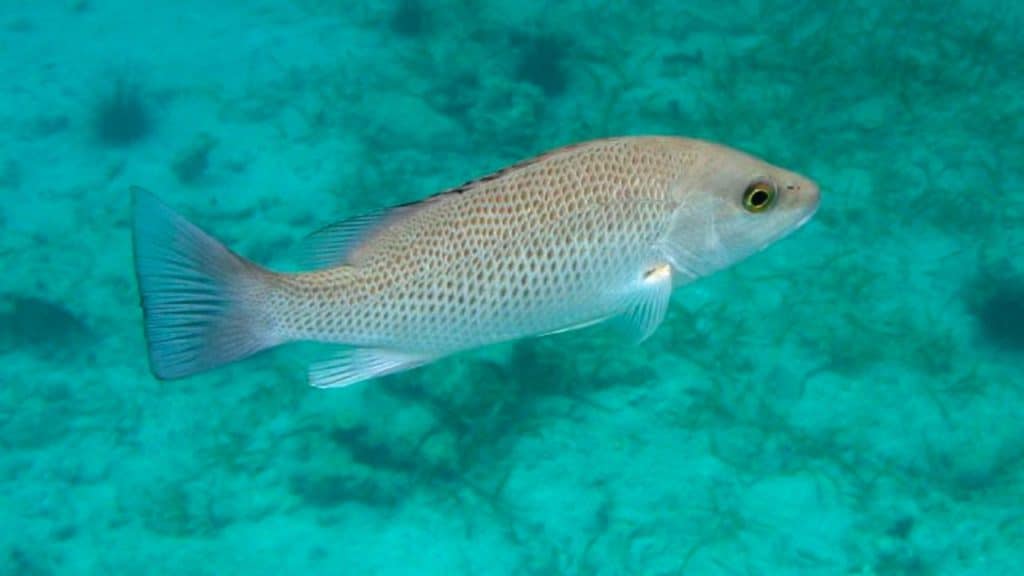
Scientific Name: Lutjanus griseus
Other Names: Gray silk, black pargue, mango snapper, gray snapper
Appearance: Gray to green with a reddish tinge, small reddish-orange spots
Average Weight and Length: 160 oz., 18 to 24 inches
Range: Massachusetts, Bermuda, Gulf of Mexico, Florida coast, West Indies, Bahamas
This snapper species vary in color, depending on age. Younger mangrove snappers have a conspicuous dark stripe and a blue stripe on the cheek. They sometimes have pale narrow bars on the body and reddish-orange fins.
Mangrove snappers are smaller and slimmer. They thrive in the coastal waters of the western Atlantic Ocean and freshwater lakes due to tolerance for varied salinity levels.
Queen Snapper
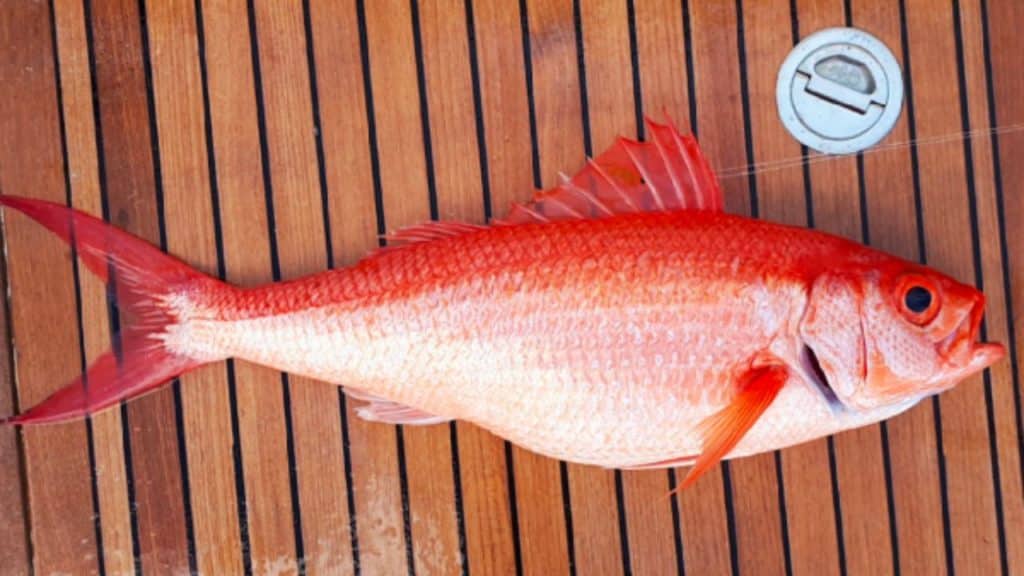
Scientific Name: Etelis oculatus
Other Names: Night snapper, brim snapper
Appearance: Red from dorsal fin to belly, light-pink underside
Average Weight and Length: 70 to 105 oz., 29 to 36 inches
Range: Western Atlantic and Gulf of Mexico
The queen snapper is among the most beautiful fishes in the world. They have a striking red color from the dorsal fin to the belly. You’ll also see a lighter pink on the undersides and deeply forked tails.
Queen snappers love deep rocky waters, thus their popularity in the Gulf of Mexico. Though uncommon, some weigh up to 530 ounces.
Silk Snapper

Scientific Name: Lutjanus vivanus
Other Names: Yellow eye snapper
Appearance: Rosy pink to red back and sides, pinkish silvery belly, faint wavy yellow lines
Average Weight and Length: 293 oz., 17 to 32 inches
Range: North Carolina, Bermuda, Brazil, Sao Paulo
You might mistake silk snappers for red snappers, but they have pointed anal fins and bright yellow eyes. Silk snappers also have a lovely rosy pink on the sides and back, but the bellies are much lighter. Also, watch out for the reddish and pale yellow fins.
Silk snappers are abundant in the Bahamas and Antilles. However, they are also present in the western Atlantic Ocean.
Schoolmaster Snapper

Scientific Name: Lutjanus apodus
Other Names: Dogtooth snapper
Appearance: Olive gray to brown upper sides and back, yellow to reddish head, lighter belly and lower sides.
Average Weight and Length: 80 to 384 oz., 12 to 22 inches
Range: Massachusetts, Trinidad, Brazil
You are more likely to find schoolmaster snappers in shallow warm coastal waters like the western Atlantic Ocean. Moreover, identifying them is easy since they are olive-gray to brown on their bodies and yellow to reddish on the head.
A fun fact about the schoolmaster is that they are the most abundant in the waters of the West Indies.
Pink Snapper
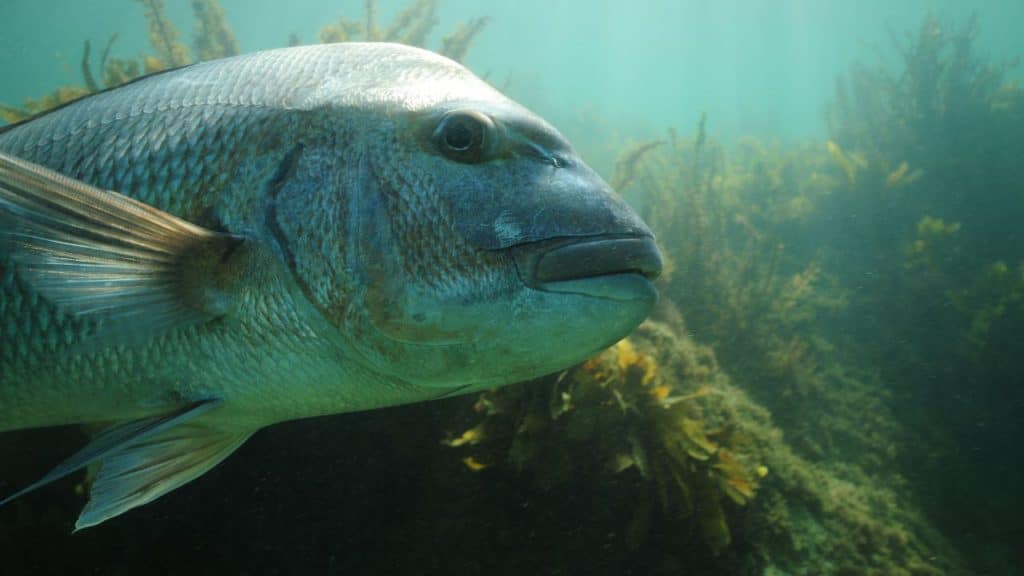
Scientific Name: Chrysophrys auratus
Other Names: Old man snapper, pinkie, Australasian snapper
Appearance: Silvery pink to coppery pink, pale silver belly, small blue spots on upper body
Average Weight and Length: 705 oz., 51 inches
Range: New Zealand, Australia
The pink snapper grows to different sizes, depending on the waters it lives in. However, the largest pinkie weighs 705 ounces.
This snapper species has an attractive silvery pink on its top. Juvenile pink snappers have small electric blue spots on the upper body.
Fun Fact: Pink snappers in the south, particularly in the Perth waters, live longer and larger than those in the north.
The Ultimate Snapper
This list of different types of snapper is just the tip of the iceberg! So, how many did you know initially? Let us know in the comments. And, as a word of caution, always check your state’s snapper fishing regulations before hunting this fish.
Table of Contents



